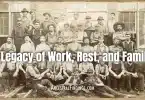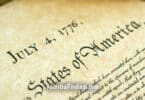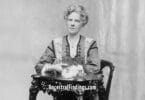Every year, as clocks shift an hour forward in spring and an hour back in fall, the tradition of Daylight Saving Time (DST) sparks a mix of enthusiasm and frustration. Some love the extended evening daylight, while others find the adjustment disruptive. But this twice-yearly clock change, deeply rooted in American life, reveals a fascinating history of energy conservation, economic interests, and even wartime urgency. From its origins in the late 19th century to its adoption during both World Wars and its establishment in U.S. law, DST reflects evolving social priorities, economic interests, and changing lifestyles.
Origins: An Idea Born for Energy and Leisure, Not Agriculture
Contrary to popular belief, Daylight Saving Time was never designed for the benefit of farmers; in fact, many farmers have traditionally opposed it. DST originated with a New Zealand entomologist named George Hudson, who proposed shifting the clocks forward by two hours in the summer to allow for more evening daylight—mainly so he could spend more time collecting insects. His idea was first proposed in 1895 but did not gain much traction globally.
In 1907, British builder William Willett took up a similar cause with a plan to advance the clocks by 80 minutes each spring, aiming to maximize daylight for recreational activities and reduce coal usage. Willett’s advocacy for what he called “Summer Time” made it to the British Parliament, where the proposal sparked interest but ultimately failed to pass. However, Willett’s proposal laid important groundwork, and when World War I broke out, the practical need for fuel conservation brought his idea into full force.
World War I and the First Large-Scale Adoption of DST
The large-scale adoption of DST began not as a civilian convenience but as a wartime necessity. In 1916, Germany was the first country to implement DST nationally as a means of conserving coal for the war effort. Britain, along with other European countries, quickly followed suit, adopting DST for similar reasons. The United States enacted its first DST in 1918 under President Woodrow Wilson, who saw it as a way to boost energy savings for the war effort. However, unlike Germany and Britain, the U.S. quickly repealed DST after World War I, as the public and several farming communities resisted the change.
World War II and “War Time” in the U.S.
When World War II erupted, DST once again became a national priority in the United States. President Franklin D. Roosevelt reinstated DST in 1942 under the term “War Time,” intending it to be a temporary measure to conserve fuel. War Time lasted from 1942 to 1945, after which individual states were left to decide whether to continue DST. This led to a chaotic period where different regions followed varying DST schedules, creating a patchwork of timekeeping that complicated transportation, broadcasting, and other industries dependent on consistent schedules.
The Uniform Time Act of 1966: Standardizing DST Across the U.S.
The lack of uniformity in DST practices prompted Congress to pass the Uniform Time Act in 1966. This legislation established a standardized DST schedule across the United States, from April to October, while allowing individual states to opt out if they preferred. Arizona and Hawaii, both with abundant daylight year-round, chose to remain on standard time. This standardization brought consistency to the U.S. and ended the chaotic local time adjustments that had plagued the post-war years. Later amendments extended DST into March and November, largely due to lobbying by businesses eager for more daylight hours for shopping and recreation.
The Energy Debate: Does DST Really Save Energy?
One of the driving arguments for DST has been energy conservation. By providing an extra hour of evening daylight, DST was thought to reduce the need for artificial lighting, thereby saving electricity. However, studies on DST’s actual impact on energy savings have been mixed. While some studies suggest modest savings in electricity, others point to increased air conditioning use in warmer regions, potentially offsetting any benefits. Despite the inconclusive data, economic interests—particularly from retail and recreational industries—have continued to support DST. The Chamber of Commerce has historically been a major proponent, recognizing that extended evening daylight encourages shopping, dining out, and attending events.
Public Health and the Modern Debate Over DST
In recent years, DST has come under scrutiny for its impact on public health. Research shows that the transition to DST in spring is associated with an increase in heart attacks, strokes, and traffic accidents, likely due to the disruption of people’s natural sleep cycles. Health professionals and organizations, including the American Academy of Sleep Medicine, argue that standard time better aligns with human circadian rhythms and should be adopted year-round. These health concerns have contributed to a growing movement to abolish or make DST permanent, as seen in several U.S. states and numerous legislative proposals in Congress.
Current Status and the Ongoing Debate in the U.S.
Today, DST remains a divisive issue in the U.S. In 2019, a poll by the Associated Press found that 70% of Americans supported ending the biannual clock changes, though they were split on whether to adopt DST or standard time permanently. Several bills to make DST permanent have been introduced in Congress, with strong support from the tourism, retail, and sports industries, which benefit from longer daylight hours. Internationally, other countries like Russia, Kazakhstan, and Turkey have experimented with permanent time adjustments, although some later reverted back due to public discontent over darker mornings in winter.
The twice-yearly clock change endures as a topic of debate, with compelling arguments on both sides. Some appreciate the added daylight for evening activities, while others call for consistency, citing health, productivity, and practical benefits. As we adjust our clocks yet again, Daylight Saving Time stands as a testament to shifting social priorities and the ongoing search for a schedule that balances lifestyle, health, and economic interests. Whether we keep DST, adopt it year-round, or abandon it altogether, the discussion over how best to use our daylight hours remains as timely as ever.
Here are three well-regarded books available that delve into the history and controversies surrounding Daylight Saving Time:
“Spring Forward: The Annual Madness of Daylight Saving Time” by Michael Downing
This book provides a humorous yet insightful look into the origins and ongoing debates around DST. Downing captures the bizarre and sometimes contentious history of DST, from early proposals to its complex modern-day impact. The book is both accessible and engaging, offering readers a chance to understand why this seemingly minor issue sparks such passionate debate.
“Seize the Daylight: The Curious and Contentious Story of Daylight Saving Time” by David Prerau
Written by one of the leading experts on DST, this book covers the scientific, political, and social aspects of timekeeping. Prerau traces the story from Benjamin Franklin’s initial suggestion to the intense lobbying and political negotiations that shaped DST policies. Full of anecdotes and insights, it’s an in-depth read for anyone curious about how and why DST became such a fixture.
“The Great Daylight Saving Time Controversy” by Chris Pearce
Pearce’s book presents a comprehensive history of DST, highlighting the conflicts, changes, and adaptations of DST over the years. From its wartime implementations to recent political battles, Pearce details the ups and downs of DST in the U.S. and other countries, providing readers with a balanced look at both sides of the debate.






